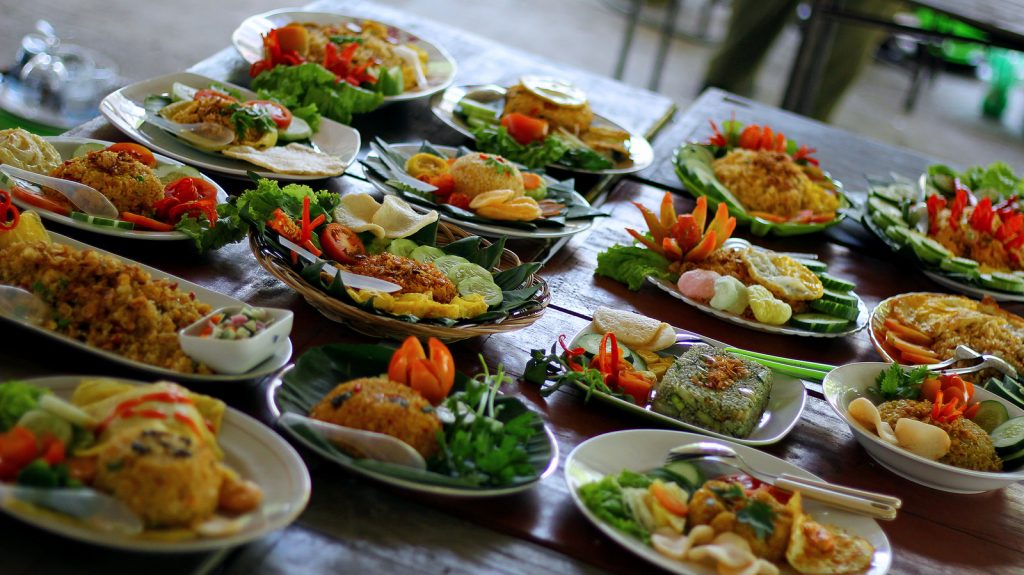Malaysia is a multiethnic country. Immigrants from China, India, Thailand and Indonesia have been living here for almost a century now. Each nation has put a piece of its own cuisine into the Malay one. Sometimes you will not understand what the differences between the Malay curry with chili paste and the Thai are, or how different the Malay Laksa soup and its Chinese version are. The modern traditional cuisine of Malaysia was built on Indian, European, Malay and Chinese culinary traditions. The basis of almost all national dishes of Malaysia is rice. It is added to the main dishes, and served as a side dish. In this country, noodles, sauce and even chips are made from rice.
Depending on the region, the national cuisine of Malaysia may differ slightly. Even if all the ingredients are the same, the cooking technique may differ, changing the taste of the whole dish. You are able to come and see these differences for yourself, using the car rental at Langkawi Airport.
Quite inexpensive food of high quality can be tried almost everywhere. A variety of dishes in Malaysia will surprise even the most experienced traveler. Malaysian cuisine is very delicious, but slightly detrimental to health, because it is very pungent. However, at least once in life, but it should be tried.
If you do not know, what traditional dishes to try first, on arrival in this Asian country, then you can give your preferences to these popular rice dishes.
Lemang (rice in bamboo)
This dish consists of salted rice, soaked in coconut milk. Bamboo shoots are lined together with banana leaf from the inside of the bamboo stick cavity, then, it is laid with prepared rice and baked for several hours on the fire. Lemang can be both a separate dish, and a side dish for meat, fish or seafood. Before eating, the remains of the banana leaf should be carefully removed from the rice.
Nasi Lemak
You definitely should not miss a chance to try this dish. ‘Nasi Lemak’ is translates as “rice in cream”. In the process of cooking, rice is soaked with coconut cream, and then steamed. With this method of cooking, rice retains the delicious aroma of coconut cream. Before it is served together with the main dish, it is wrapped in a banana leaf. Sometimes rice is wrapped in a leaf of pandanus, ginger or a stalk of lemongrass, to make it more fragrant.
For preparation of Malaysian Nasi Lemak, hot spicy sauce (sambal), hard-boiled eggs, cucumber slices, small dried anchovies (Ikan bilis) and roasted peanuts are used. In addition to these ingredients, cuttlefish could be added to sambal sauce.
Shellfish, fried water spinach (kangkong), pickled vegetables (acar) or beef rendang (beef and spices, stewed in coconut milk) could be added to the rice.
These mysterious green pyramids from banana leaves are sold in Malaysia everywhere. Sometimes meat or seafood is placed in this dish instead of fish. Malaysians usually eat Nasi Lemak for breakfast. This dish could be considered one of the symbols of their country.
Nasi kandar
If you are fond of rice dishes, then do not miss the opportunity to try this local Malay dish.
Nasi kandar is a popular dish in the north of Malaysia, originally from Penang. It is a steamed rice, sometimes a little seasoned, which is served with various types of curry and side dishes. Rice is served with fried chicken, lamb curry, diced beef, caviar, fried shrimps or fried squids. Okra, bitter melon or eggplants are usually served together with the dish.
Rice is poured with a mixture of curry sauces. When ordering a dish, we advise you to ask for a mixture of fish + chicken + dal curry sauce to be put on the rice. Wait a little for the sauce to soak the rice. It will give the dish an inexpressible aroma and taste. This kind of nasi is called “banjir”, which means, “flooded” rice. Many people eat this dish with their hands and the fragrance of the sauce remains even after the hands have been washed. This smell is considered one of the advantages of the dish.
Goreng (fried noodles or rice)
‘Goreng’ in Malay means ‘fried’. This dish could be made from different kinds of noodles (Mee Goreng (yellow noodles), Bihun Goreng or Koey Teow Goreng) and from rice (Nasi Goreng).
Goreng is often prepared at the street markets. There, the noodles and rice are fried in the open air on huge wok frying pans. Moreover, it is sold right from the fire, wrapped in preservative paper. When goreng is served in expensive restaurants, for example, the seafood is added to the fried noodles.
This dish vaguely resembles Pad Tai and stir-fried rice. This is a delicious dish, but very fatty and calorie-laden. Those, who are not afraid to gain weight, would be fond of goreng.

